Birds
Introduction
Raptors
Terns
A late Arctic Tern graced Farmoor on the 2nd
Wildfowl
Waders
Miscellaneous
Quail were heard near Blewbury on the 6th at Lollingdon Hill on the 10th and on Otmoor on the 15th
Cranes attempt to breed on Otmoor
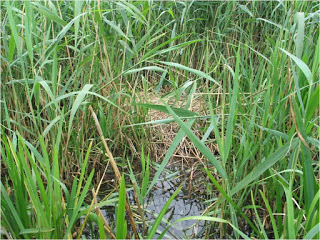

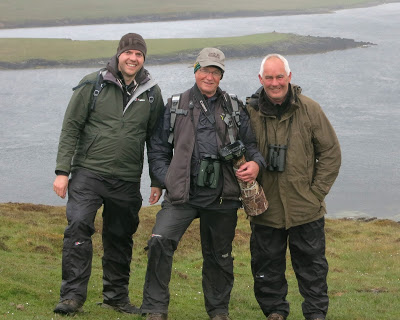
Congratulations to Terry Sherlock, Mark Chivers and Andy Last in finding an American mega during their stay on the Shetlands earlier this month.
 The guys had gone up to the northern Isles in what was primarily a trip to photograph the abundant breeding sea birds, but whilst there they also managed to turf up a superb Swainson's Thrush within the grounds of their accommodation on Fetlar!
The guys had gone up to the northern Isles in what was primarily a trip to photograph the abundant breeding sea birds, but whilst there they also managed to turf up a superb Swainson's Thrush within the grounds of their accommodation on Fetlar!
- July Highlights
Female Red-backed Shrike Churn courtesy of Wayne Bull Highlights July is traditionally just as bad as June on the bird front. However, whereas last month there was almost nothing to report we've actually had a smattering of good headline birds this...
- May Highlights
Black-throated Diver Farmoor Reservoir courtesy of Derek Lees Highlights So May has come and gone and we are now into the fag-end of spring. But did it live up to its reputation as the best month of the first half of the year if not the whole year? Well,...
- July Round-up
Spotted Flycatcher (c) Andy Last In what is the quietest month in the birding calender July still held a few surprises. The Female Marsh Harrier continued its residency at Otmoor throughout with a male bird seen at Standlake on the 5th. Last months...
- May Round-up
Arctic Tern Farmoor May (c) Andy LastThe weather remained unsettled and cold for much of May which meant that for the second year in succession the breeding birds in the county are having a tough time. A Crane was picked up as it drifted...
- Cranes On Otmoor 26th March
Two Cranes have been been seen again this morning in the Otmoor area. The birds are very mobile and flighty and if you are lucky enough to see them please keep your distance and be aware that at this time of year all the fields hold breeding...
Birds
June Highlights
 |
| Spotted Flycatcher courtesy of Mark Chivers |
Introduction
So the first half of the year is now over and it's time to take stock of June. I know that it's supposed to be a quiet month but I didn't quite think that it was going to be this quiet with there being no headline birds to mention at all apart from a possible Red-footed Falcon seen briefly over the A420 near Fyfield. So, without further ado it's on to the the summary section.
Raptors
An Osprey was a late migrant over Stoke Lyne on the 19th and the two female Marsh Harriers remained on the RSPB Otmoor reserve throughout the month
| Young Kestrels Farmoor courtesy of Jim Hutchins |
A late Arctic Tern graced Farmoor on the 2nd
Wildfowl
Two presumably feral Ruddy Shelduck must have been a surprise sighting as they flew over White Horse Hill near Uffinton on the 4th. Two of their more common counterparts were on Otmoor on the 6th with a single Shelduck at Blenheim park on the 13th. Otmoor also hosted a trio of ferals with the long staying Ross's goose being joined by two Bar-headed and one Barnacle goose on the 7th.
A Bittern was an unusual record for mid-summer on Otmoor on the 27th being seen in flight over the reedbeds on a number of occasions over the day. Little Egret numbers continued to rise on Otmoor throughout June with at least thirteen birds by the 30th.
Waders
Six Ringed Plover on Big Otmoor on the 2nd was a good count for June with singles at Farmoor on the 2nd and the 4th and at Rushy Common from the 3rd until at least the 19th. Three Sanderling were seen along the causeway at Farmoor on the 2nd accompanied by a single Turnstone. A Black-tailed Godwit was on Otmoor from the 6th-14th. A late migrant or early returning Whimbrel was seen at Balscote Quarry on the 20th accompanied by two Little-ringed Plover. A second Whimbrel was seen on Greenaways on Otmoor on the 24th.
 |
| Whimbrel and Lapwing Otmoor RSPB courtesy of Helaine Cadman |
 |
| Turnstone at Farmoor courtesy of James Evry |
Green Sandpipers (those harbingers of the start of autumn) started arriving back in the county from the 20th at the Bicester Wetlands reserve with two birds on Otmoor on the last day of the month and a single at Pit 60 near Standlake also on the 30th.
| Ringed Plover at Farmoor courtesy of Jim Hutchins |
Quail were heard near Blewbury on the 6th at Lollingdon Hill on the 10th and on Otmoor on the 15th
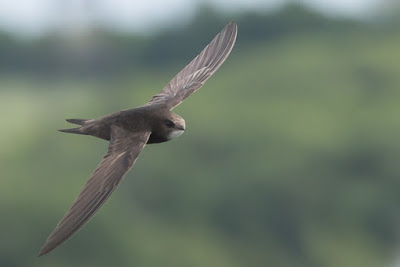 |
| Swift courtesy of The Gun-slinger |
The Turtle Doves still continued to enthral visitors and regulars alike on Otmoor with a regular pair showing well near the cattle pens and a further pair being seen near Oddington. A Lesser-spotted Woodpecker was briefly seen in a garden in Stanton st John on the 10th. On Otmoor, the Grasshopper Warblers seemed to have left their traditionally favourite area within Moorlys in preference for Julys Meadow and the Pill grounds with birds still reeling at the end of the month. A single bird was also noted near Oddington.
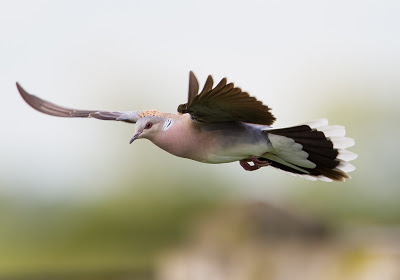 |
| Turtle Dove Otmoor courtesy of John Reynolds |
Spotted Flycatchers were seen on the Otmoor RSPB reserve over the month and within Beckley village. Two birds were found just inside the Oxon border within Farnborough Park with a further pair seen at Kingston Bapuize. A Single bird was at Great Rollright on the 27th.
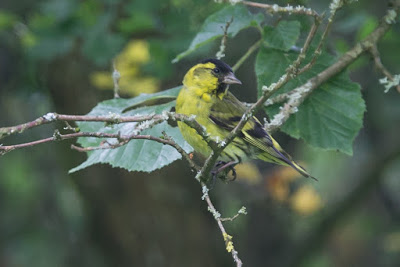 |
| Siskin Warburg Nature Reserve courtesy of the Gun-slinger |
Cranes attempt to breed on Otmoor
By Peter Barker
Anyone who regularly looks at the Oxon Birding site or at Otmoor Birding might well have wondered at the abrupt halt in reports of cranes on Otmoor. You may even have reported them to Goingbirding and wondered why the report wasn’t mentioned. The reason for the information embargo ended sadly with a tragedy, but that individual failure conceals much broader and significant successes.
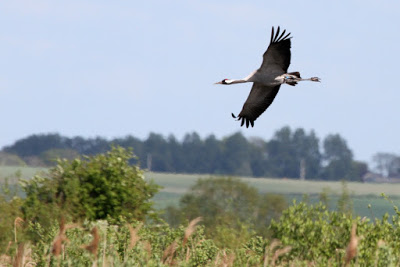 |
| Courtesy of Helaine Cadman |
On Saturday 18th April two Common Cranes were seen circling Big Otmoor, they were still present on Sunday morning and were clearly un-ringed. On Wednesday 22nd April a different two were found. Unlike the others they were seen to be carrying colour rings from the Crane re-introduction project on the Somerset Levels and Moors.
They were spending time feeding out on quiet adjacent fields both on and off the reserve. Just to add a little more confusion three different Cranes from the Somerset Levels and Moors project were seen flying in to the Bicester Wetland Reserve, before moving on later the same day. So in the space of just a week we had had seven different Cranes in the county.
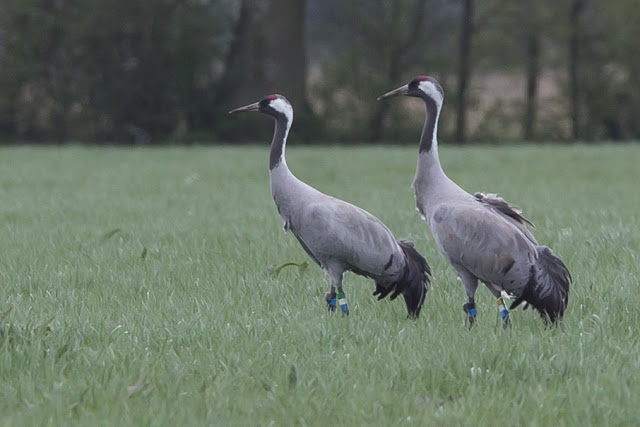 |
| Ringed Cranes courtesy of Roger Wyatt |
RSPB staff had been liaising with the Crane Project and we now knew that “our” birds were indeed a pair, the male known as “Wycliffe” the female as “Maple Glory". Their names were chosen by local primary school children as part of an engagement project; these children are now connected to 'their cranes' and will be incredibly excited that 'their' birds made a breeding attempt this year. Cranes form dedicated pairs and stay together all the time, except when incubating. At such a time the birds take it in turns to feed and to incubate. As soon as we started to see single birds feeding out on the fields or flying in and out of an area of the moor, our hopes were raised that they might actually be attempting to nest, despite being very young and inexperienced. We noted that one bird would fly in and then the other individual would fly out. At this time it was decided to minimise the information going out about them.
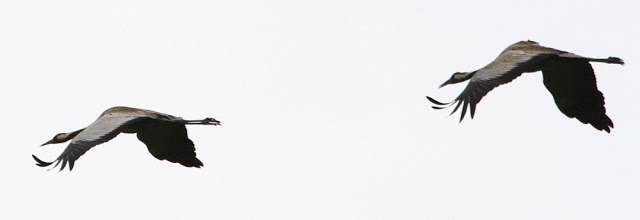 |
| Courtesy of Helaine Cadman |
All was well for the next three weeks until the morning of Friday 12th June. The volunteers, who were watching the birds saw one fly in as usual and expected the other to fly out. Instead there was some commotion, some bugling and both birds flew up and off towards the east. RSPB staff talked to the Crane experts who said that if they didn’t return within two hours they would not return. This proved to be the case and so the RSPB staff went out to the location that the birds had been frequenting and found the nest. Sadly they also found a single egg that had been predated the culprit remains unknown although it is suspected to be a day time predator. The egg seems to have been close to hatching; there was sticky down on the inside of the shell.


 |
| Nest and egg pictures(c) Fergus Mosey |
Thus the first attempt by Common Crane to breed in Oxfordshire for perhaps six hundred years* ended in failure. However I believe there are many positives to be drawn from this and they should not be underestimated. We now know that the site, despite its regular visitors, is quiet enough and large enough for these secretive birds to feel confident enough to make a breeding attempt. We know that they were finding enough food in the countryside and on the reserve and the habitat suited them. Although the birds had been hand reared they behaved just as naturally and warily as truly wild birds. Local farmers and landowners were thrilled to have such special birds on the land and took pride in them. The value of the habitat restoration and recreation undertaken by the hard work of RSPB staff and volunteers is highlighted when such rare and beautiful birds adopt it. Of course this is not in any way to minimise the value of the habitat for all of the other wildlife that is found here.
The Cranes may now remain locally and moult, during this time they will be vulnerable to predators but will be able to take advantage of the huge numbers of invertebrates that can be found in the grassland, especially grasshoppers. We can only wait now to see if they return and make another attempt to breed next year. They will of course be older, wiser and more mature by then.
*The Birds of Oxfordshire states:
“Cranes were resident in Britain in ancient times, and Wilson (1987) reports bones of this species found in Oxfordshire dating back to Mesolithic, Romano British, Saxon, Medieval and post-Medieval times. Since then it has occurred very rarely.”
Oxford Crew strike it lucky
Courtesy of Andy Last
Congratulations to Terry Sherlock, Mark Chivers and Andy Last in finding an American mega during their stay on the Shetlands earlier this month.
| Swainson's Thrush courtesy of Terry Sherlock |
Calling all 'Birdsworths'
Have you a birding tale to tell? A story of birding daring do, an EPIC twitch or simply a story of an encounter with one of our feathered friends. If so we would love to hear from you...
- July Highlights
Female Red-backed Shrike Churn courtesy of Wayne Bull Highlights July is traditionally just as bad as June on the bird front. However, whereas last month there was almost nothing to report we've actually had a smattering of good headline birds this...
- May Highlights
Black-throated Diver Farmoor Reservoir courtesy of Derek Lees Highlights So May has come and gone and we are now into the fag-end of spring. But did it live up to its reputation as the best month of the first half of the year if not the whole year? Well,...
- July Round-up
Spotted Flycatcher (c) Andy Last In what is the quietest month in the birding calender July still held a few surprises. The Female Marsh Harrier continued its residency at Otmoor throughout with a male bird seen at Standlake on the 5th. Last months...
- May Round-up
Arctic Tern Farmoor May (c) Andy LastThe weather remained unsettled and cold for much of May which meant that for the second year in succession the breeding birds in the county are having a tough time. A Crane was picked up as it drifted...
- Cranes On Otmoor 26th March
Two Cranes have been been seen again this morning in the Otmoor area. The birds are very mobile and flighty and if you are lucky enough to see them please keep your distance and be aware that at this time of year all the fields hold breeding...
